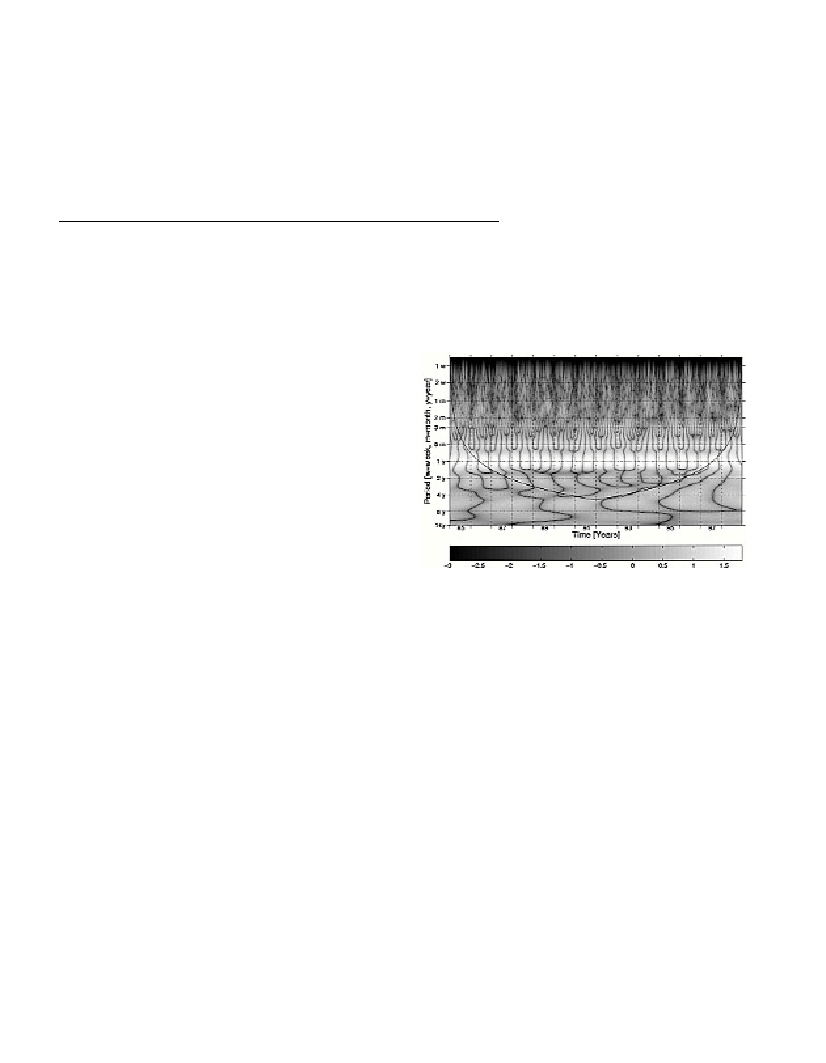Rapp. Comm. int. Mer Médit., 37,2004
115
DEEP WATER MASS VARIABILITY IN THE EASTERN MEDITERRANEAN
A. Lascaratos * and S. Sofianos
Ocean Physics and Modelling Group, University of Athens, University Campus, 15784 Athens, Greece
Abstract
The study of the hydrological properties of water masses in the Eastern Mediterranean revealed abrupt changes in temperature and salinity
characteristics of the deep waters. Two events approximately twenty year apart “detach” from the general trends. They present different
characteristics that may be due to the different location where the two events were originated. During the mid 60s and early 70s big changes
occurred in the Levantine and spread to other basins of the Eastern Mediterranean (Levantine Transient), while during the late 80s and
early 90s the Aegean Sea played a key role in the climatic event (Eastern Mediterranean Transient).
Key-words: Eastern Mediterranean Sea, Climatic Changes, Water-mass Characteristics
Introduction
Because of its small dimensions and the complicated topography
which divides the basin in several sub-basins, the Mediterranean Sea
response to atmospheric forcing is very rapid and on much smaller
time scales than those of the global ocean. The recent Eastern
Mediterranean Transient (EMT) which occurred in the late 80’s and
early 90’s (1,2), is such an example of a rapid response of the eastern
basin’s thermohaline circulation and deep-water formation to changes
in atmospheric forcing. A careful study of the deep water
characteristics shows that this was not a unique case of abrupt changes
in the Eastern Mediterranean Sea deep water masses. In order to
identify climatic variability features and understand critical processes
responsible for the observed variability, oceanographic datasets were
analyzed and compared with meteorological data and process oriented
model experiments.
Data
Temperature, salinity and density time series over the second half
of the last century for the Levantine, Ionian and Cretan Seas were
constructed using the MEDATLAS data base, which combines pre-
existing databases such as the MODB data set, with more recent data.
In this study we focus mainly on the deep water masses and the depth
of 2000 mis selected as a reference level for deep water monitoring
in the Levantine and Ionian basins while the depth of 1000 mfor the
Cretan Sea, which is not far from its mean depth and sill depths. The
choice of depths re?ects also the availability of data. Figure 1 presents
the time series for the three basins.
Discussion
In the deep layers in all regions we can observe positive trends for
all three parameters. But the most important feature is the saw-tooth
jagged form of the time series revealing two major events, one
centered in the mid-70s and the second one approximately 20 years
later. The most recent is the well known EMT. The second one is
detected in the 70s and concerns a considerable increase of salinity
and density. It seems to be only salinity induced (the pulses in salinity
are of the same order of magnitude in both cases, while the
temperature does not show any signal as it does in the EMT), hence
different from the EMT episode and is called Levantine Transient
(LT).
The differences between the two events can be attributed to the
different origin of the transient deep water masses. During the EMT
dense waters of Cretan Sea origin are spreading to the adjacent basins
altering the temperature-salinity characteristics of the deep layers
(1,2). On the other hand, during the LT, the data indicate that the
source lies in the Levantine basin. The formation of very dense waters
in the Levantine basin may caused the uplifting of the deep water
horizon The new state favored the intrusion of deep waters in the
Cretan Sea, producing a decreasing trend in the temperature of the
deep waters. With a few years delay the signal is observed in the
Ionian basin. The signal resembles that of the Levantine but with
weaker amplitude. Although data is not enough to describe the whole
cycle of this event, the temperature-salinity anomalies fade rapidly
(approximately 10 years).
Changes of the atmospheric forcing (3) and the water budget due to
the Nile River dam construction (4), during the late 50s and early 60s
the Eastern Mediterranean, are being investigated using
meteorological data and process oriented modelling experiments.
Such conditions may trigger changes in the thermohaline circulation
and water mass formation processes resulting in formation of deep
waters with unusual temperature-salinity characteristics. Model
experiments showed that the Nile damming combined with cooling
events can lead to formation of deep waters with higher salinity in the
Levantine basin, compared with the characteristics of the Eastern
Mediterranean Deep Water (5). Concluding, it is very interesting to
notice the different forms of response of Eastern Mediterranean sub-
basins to variability in the atmospheric forcing, underlining the
sensitivity of the basin to natural and anthropogenic changes.
Fig. 1. Potential temperature, salinity and sigma-theta in (a) the
Levantine basin (2000 m), (b) the Cretan Sea (1000 m), and (c) the
Ionian Sea (2000 m).
References
1-Roether, W., B. B. Manca, B. Klein, D. Bregant, D. Georgopoulos, V.
Beitzel, V. Kovacevic, and A. Luchetta, 1996. Rceent changes in Eastern
Mediterranean deep waters. Science, 271: 333-335.
2-Lascaratos, A., W. Roether, K. Nittis, and B. Klein, 1999. Recent
changes in deep water formation and spreading in the eastern
Mediterranean Sea. Prog. Oceanogr., 44: 5-36.
3-Lascaratos, A., S. Sofianos, and G. Korres, 2002. Interannual
variability of atmospheric parameters over the Mediterranean basin from
1945 to 1994. CIESM Workshop Series, n
o
16: 21-23.
4-Skliris, N., and A. Lascaratos, 2003. Impacts of the Nile River
damming on the thermohaline circulation and water mass characteristics
of the Mediterranean Sea. J. Mar.Sys., under review.

